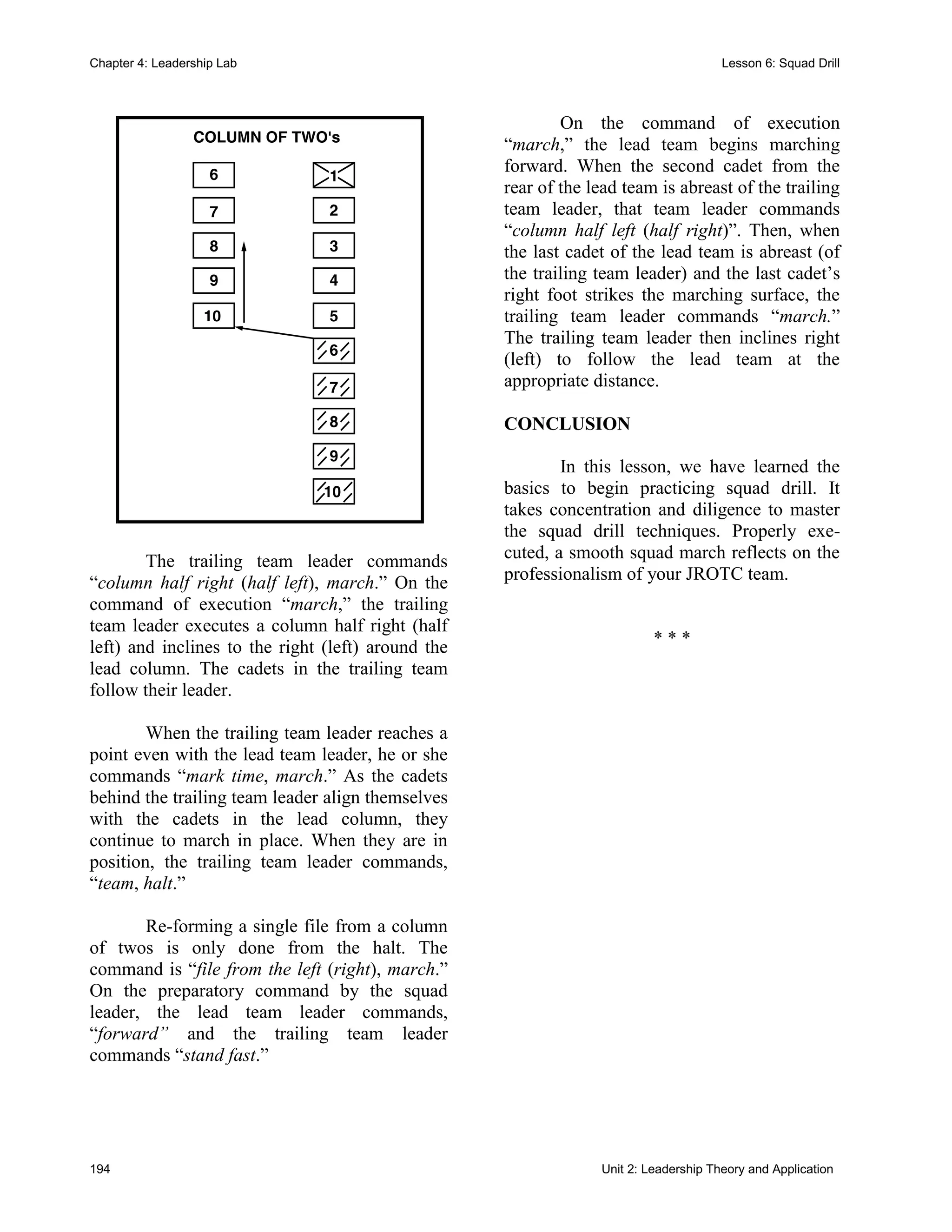This document provides instruction on squad drill techniques for a JROTC unit. It discusses how to form a squad in line and column formations, including falling in, dressing, and counting off. It also covers changing between normal, close, and double intervals. The document outlines how to march the squad, including changing direction, marching to the flank, and forming and re-forming a column of twos. The purpose is to introduce cadets to basic squad drill and help them practice proper techniques.





